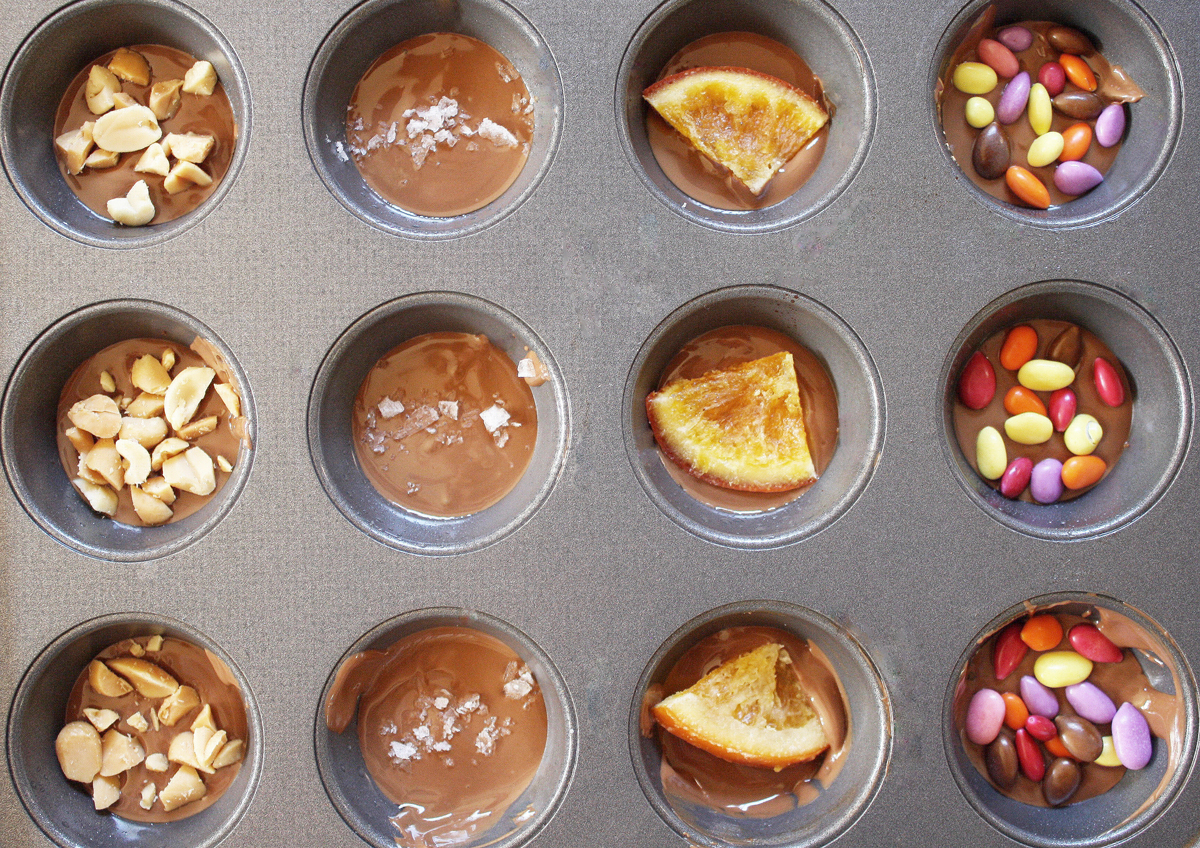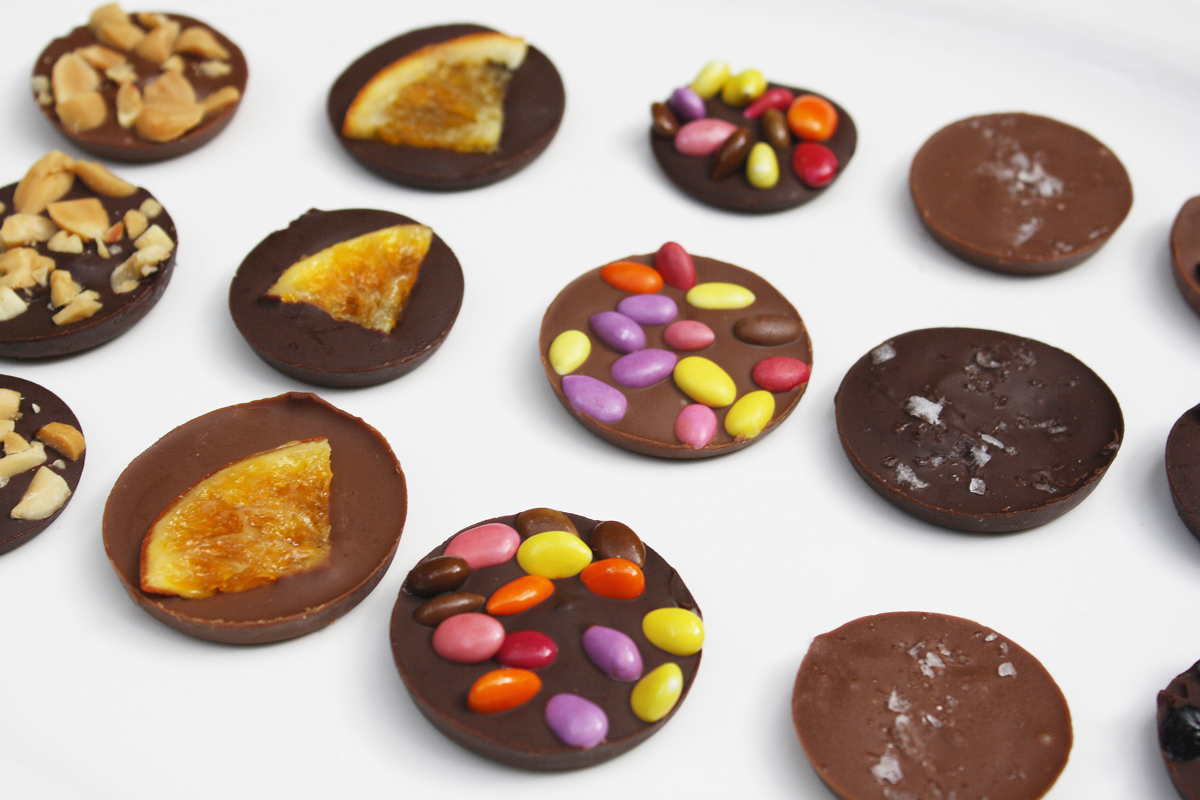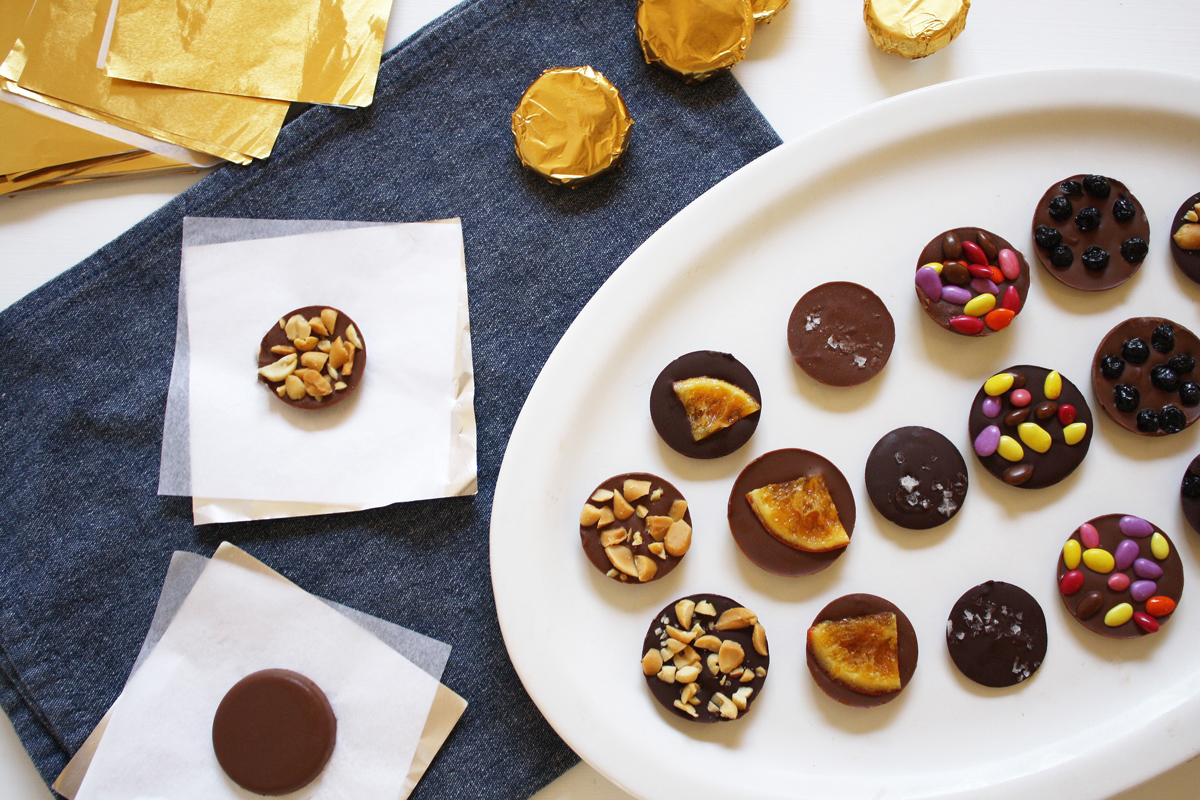I can’t remember a Hanukkah without chocolate gelt wrapped in its iconic metallic foil, imprinted with menorah imagery, packaged in mesh plastic bags, and available for sale at nearly every grocery store in December. If gelt is around I’ll definitely eat it. The tug of nostalgia + chocolate is strong. But if I’m being honest, I think most store-bought gelt is mediocre at best, and more often than not it’s waxy and chalky. What is gelt anyway?
Hanukkah gelt is a Yiddish term that means both real coin money, as well as chocolate coin treats. Like many ancient Jewish things, no one knows exactly how the tradition of giving out gelt came to be. We do know that thousands of years ago the descendents of the Maccabees, the Hasmoneans, minted coins with an image of the menorah to mark their freedom from the Greeks. We also know that it was popular in the 18th century for students to give their religious teachers coins as gifts for Hanukkah. And in the 1920s, making chocolate coins for Hanukkah became popular in America. Some say American chocolatiers may have even been inspired by the Dutch and Belgian custom of giving out chocolate coins (geld) for the St. Nicholas’ celebration. Regardless of its origin story, chocolate gelt is now as much a food fixture of Hanukkah as latkes.
But what if gelt could be better? Homemade Hanukkah gelt is a big step up in taste from the average commercial kind, and it’s also a fun project that takes very little work to make. Just like hoemmade chocolate bark, this recipe is all about customizing your gelt to your liking. Use your favorite kind of chocolate, any good bar will do. Melt it. Top with any extras that you love. I like to top my chocolate gelt with dried fruit, chopped roasted nuts, flaky salt, and colorful chocolate covered sunflower seeds. You might like candied ginger, rainbow sprinkles, cocoa nibs, chili powder, or butterscotch chunks. The world of chocolate gelt is full of miraculous topping combinations. Then you can wrap them up and place them in a decorative bag and gift it to a friend, or fill a bowl with them and serve them at your next Hanukkah party. Little effort will have a huge payoff, which is my favorite kind of culinary victory. Happy gelt making, and happy Hanukkah!
Homemade Hanukkah Gelt
Makes 24 gelt, or a full mini-muffin tin tray
Ingredients:
6 oz good quality milk or dark chocolate (about 2 chocolate bars, or ½ a bag chocolate chips)
Cooking oil spray
Toppings: chopped peanuts, dried blueberries, chocolate covered sunflower seeds, flake salt, candied orange, or your favorite
Directions:

1. Spray a mini muffin tin with cooking spray, or brush with a neutral oil.
2. If using a candy bar, chop your chocolate into small chunks.
3. Place a heatproof bowl over a pot of simmering water, make sure the bottom of the bowl is not touching the water but resting on the top of the pot. Place the chocolate into the bowl, stir occasionally until fully melted, about 2-3 minutes. Alternatively, you can place the chocolate in a microwave safe bowl and melt in the microwave in 10-second increments, stirring in between.
4. Add a spoonful of melted chocolate to each of the muffin cups; you can make these as thick or thin as you’d like. If you like larger-sized gelt you may need to use more chocolate.
5. While the chocolate is still warm, top with any toppings you choose, like chopped peanuts, candied orange, or dried blueberries.
6. Refrigerate for 1 hour or until fully firm and set.
7. Remove the chocolate from the muffin tin either by flipping the tin upside down and tapping it against a smooth clean surface, or you can use an offset spatula to help you get the gelt out of the tin. You may have to bang the tin a little hard to loosen the chocolate. If you’re having trouble getting the gelt out of the tin, it is likely because you need to give the chocolate a little more time to set.
8. Wrap in gold or silver foil candy wrappers, which you can find online, at craft stores, or at baking supply stores. Alternatively, you can serve the gelt unwrapped.
9. Store in the refrigerator for up to 2 weeks.




